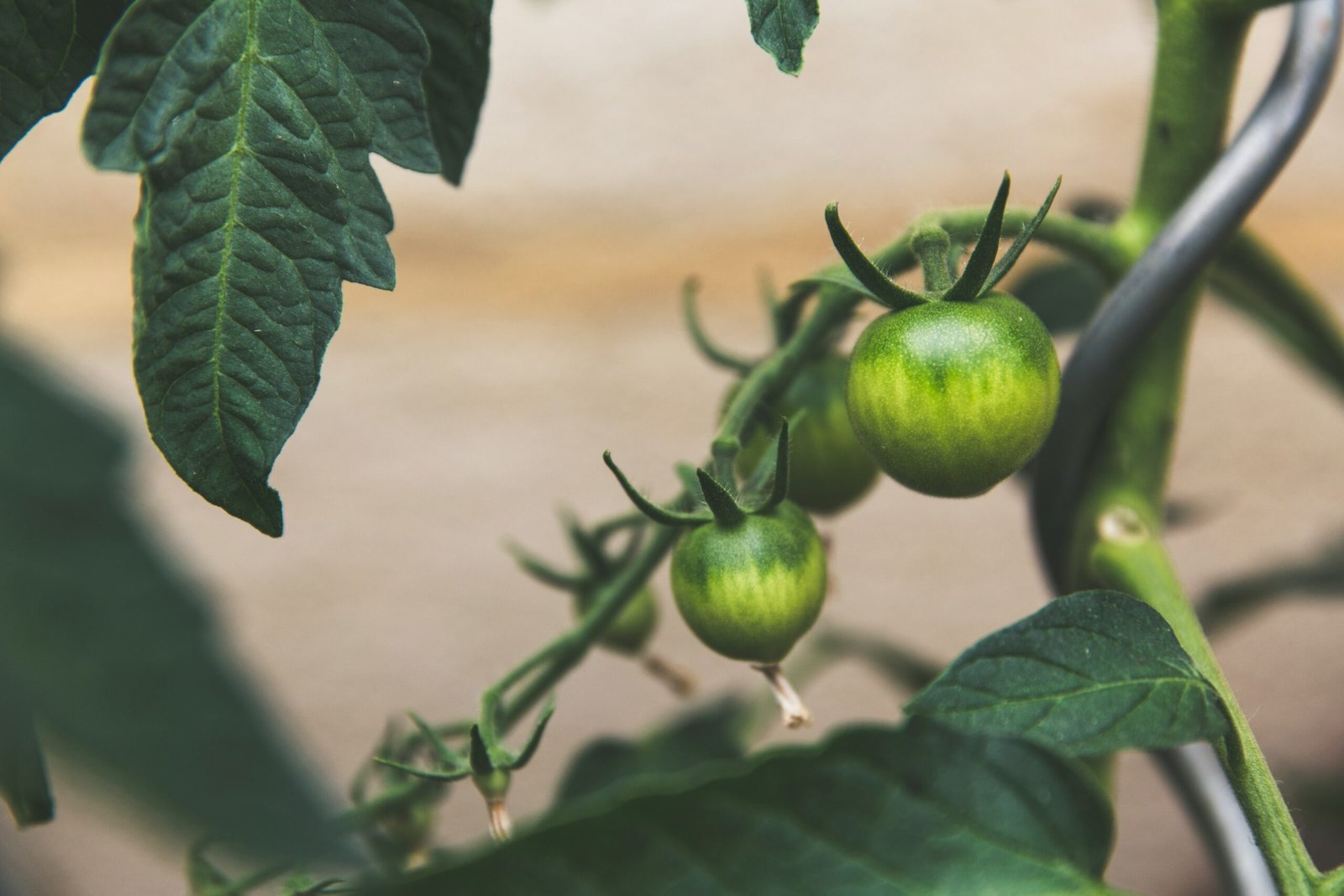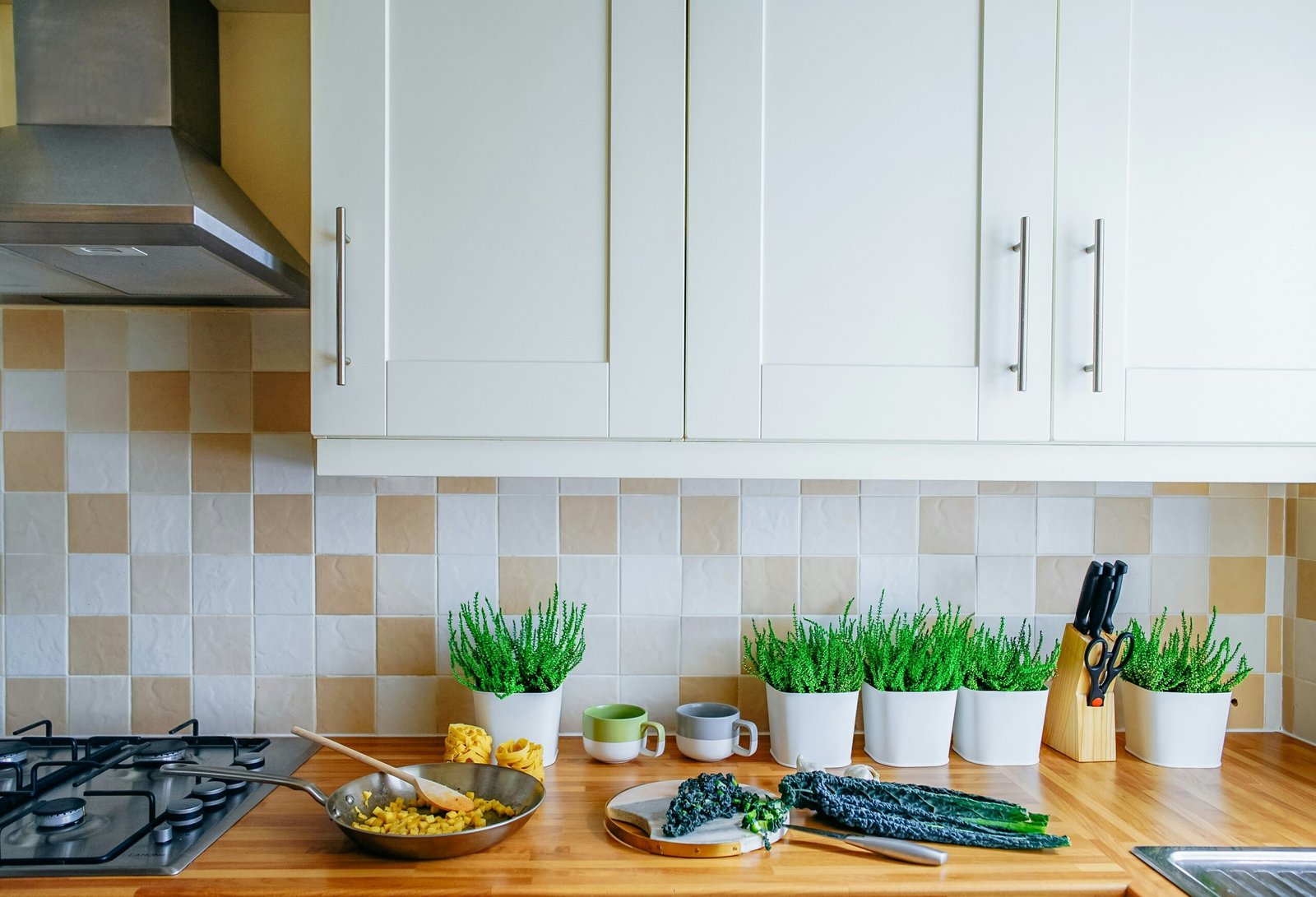
 “`html
“`html
Introduction to Urban Gardening
Urban gardening refers to the practice of cultivating, processing, and distributing food in or around urban areas. As cities grow increasingly congested, the importance of integrating green spaces becomes ever more evident. Urban gardening has emerged as a viable solution, fulfilling the need for fresh produce while simultaneously offering numerous social, environmental, and economic benefits. The movement has gained traction over the years, with more city dwellers adopting the practice as an integral part of urban life, transforming concrete jungles into thriving green havens.
One of the key factors driving the popularity of urban gardening is its ability to enhance the quality of life in densely populated areas. Green spaces have been shown to significantly reduce stress, improve air quality, and foster community engagement. Moreover, urban gardening enables city residents to reconnect with nature, offering a respite from the hectic pace of metropolitan life. Whether it’s a rooftop garden, community plot, or a vertical garden on a balcony, these green spaces are becoming essential components of the urban landscape.
Another critical aspect of urban gardening is its contribution to food security and sustainability. By growing their own vegetables and herbs, urban gardeners can reduce their reliance on commercial food systems, which often involve long supply chains and high carbon footprints. Localized food production not only ensures fresher produce but also supports more sustainable consumption patterns. Furthermore, urban gardening can transform vacant lots and underutilized spaces into productive areas, thereby optimizing land use in crowded cities.
The rise of urban gardening has also sparked a renewed interest in traditional agricultural practices and innovative techniques tailored to the urban environment. From hydroponics to container gardening, city dwellers are exploring various methods to adapt farming practices to limited spaces. This ingenuity is paving the way for a more resilient and self-sufficient urban lifestyle, proving that even in the most concrete of settings, nature can find a way to flourish.
Urban gardening offers a myriad of benefits, significantly impacting individuals and the environment they inhabit. One of the primary advantages is its positive influence on mental and physical health. Gardening acts as a therapeutic activity, reducing stress levels and promoting relaxation. Physically, engaging in gardening activities can improve cardiovascular health, strength, and flexibility, providing a practical form of exercise within an urban setting.
The environmental benefits of urban gardening are equally noteworthy. Urban gardeners play a crucial role in enhancing local biodiversity. By cultivating a variety of plants, they create habitats for pollinators such as bees and butterflies, contributing to the overall ecosystem’s health. Moreover, urban gardening helps mitigate the urban heat island effect—a phenomenon where urban areas experience higher temperatures than their rural surroundings. Plants absorb sunlight and provide shade, effectively cooling the environment and contributing to a more sustainable urban climate.
Further emphasizing its value, urban gardening encourages self-sufficiency and local food production. It allows individuals to grow their own fruits, vegetables, and herbs, reducing dependence on commercial agriculture and promoting a healthier diet. This form of gardening can also contribute to food security, particularly in urban areas with limited access to fresh produce. This aspect of urban gardening aligns with the broader goals of sustainability and resilience, as it provides a reliable source of nutrition directly within the community.
Lastly, urban gardening fosters community engagement and social interaction. Community gardens become gathering spots where individuals from diverse backgrounds can connect, share knowledge, and work towards common goals. Such spaces strengthen neighborhood bonds and create a sense of belonging and cooperation. In essence, urban gardening not only enhances the aesthetic appeal of city life but also nurtures a strong, interactive, and resilient community network.
Types of Urban Gardens
Urban gardening offers a diverse array of options that cater to different spaces and resources available within city settings. Each type of urban garden brings its own distinct benefits and challenges, making it essential to understand their unique characteristics to choose the most suitable option.
Rooftop Gardens are a popular choice in densely populated urban areas where horizontal space is limited. These gardens are established on the flat roofs of buildings, transforming otherwise unused spaces into vibrant green areas. Beyond beautifying the environment, rooftop gardens can contribute to better insulation, lowering energy costs, and combating the urban heat island effect by absorbing sunlight. However, they require careful planning related to structural load, water drainage, and accessibility, making them a potentially high-investment venture.
Community Gardens offer a collaborative approach to urban gardening. These shared plots, often situated in vacant lots or designated public spaces, bring people together to grow vegetables, herbs, and flowers collectively. The sense of community-building and shared responsibility can enhance social connections and promote food security. However, community gardens require robust organization, commitment from members, and negotiation for land access and long-term security.
Vertical Gardens, or green walls, are innovative solutions for gardening in compact city spaces. These gardens utilize vertical structures to grow plants upwards, making efficient use of small areas such as balconies, fences, and interior walls. Vertical gardens can improve air quality, increase aesthetic appeal, and provide cooling effects in urban environments. The primary challenges include maintaining proper irrigation, managing plant selection suited for vertical growth, and ensuring structural stability to support the garden’s weight.
Container Gardening is perhaps the most versatile and accessible form of urban gardening. Using various pots, planters, and even repurposed materials, container gardens can flourish on windowsills, terraces, and small patios. This type allows for easy relocation, individualized care for each plant, and flexibility in plant choice. However, the need for frequent watering and the risk of limited root growth can pose challenges for container gardeners. Nonetheless, this method remains highly adaptable for urban residents seeking to introduce greenery into their living spaces.
Recognizing the different types of urban gardens and their specific attributes can help urban dwellers make informed decisions about integrating nature into their city lives. Each type, with its unique set of advantages and potential hurdles, offers a pathway to bringing more green spaces into urban environments.
Getting Started with Your Urban Garden
Starting an urban garden can be a rewarding endeavor that brings nature closer to your city life. To begin with, selecting a suitable location is crucial. Look for a spot that receives at least six hours of sunlight daily – rooftops, balconies, and windowsills are often ideal for this purpose. Ensure the area is easily accessible for regular maintenance and has proper drainage to prevent waterlogging.
Next, choose the right plants based on the local climate and available space. Hardy plants like herbs, lettuce, and cherry tomatoes are great for beginners as they adapt well to various conditions and do not require extensive care. Embrace diversity by mixing and matching plants that complement each other’s growth patterns, such as pairing tall plants with vining ones, which can help maximize limited space.
Understanding the local climate is another critical step in establishing an urban garden. Research the average temperatures, rainfall, and seasonal changes in your area before selecting plant varieties. For instance, drought-resistant plants are ideal for regions with limited rainfall, while tropical plants thrive in humid climates. Utilizing organic compost and fertilizers will ensure that your plants receive the necessary nutrients tailored to your local soil conditions.
Equipping yourself with essential tools and supplies will make the gardening process smoother. Invest in fundamental tools such as a trowel, watering can, pruning shears, and gardening gloves. Depending on your setup, you might also need containers, pots, or raised beds to house your plants. Using high-quality potting mix is essential for container gardening, as it provides a well-balanced medium for root development.
By following these guidelines and tailoring them to your urban environment, you can successfully create a thriving urban garden that enriches your living space. The effort you put into planning and setting up your garden will pay off as you enjoy the benefits of fresh produce, improved air quality, and a peaceful green retreat amidst the urban hustle and bustle.
Maximizing Small Spaces
Urban gardening offers a unique set of challenges, particularly regarding space constraints. However, individuals with limited space can still cultivate a thriving garden by employing creative techniques and solutions. One effective method is vertical gardening, which involves growing plants upward rather than outward. Utilizing trellises, wall-mounted planters, and tiered plant stands can significantly increase the number of plants you can grow in a confined area. Vegetables like peas, beans, and tomatoes, as well as various herbs, thrive in vertical setups.
Additionally, hanging baskets present an excellent opportunity to add greenery where ground space is nonexistent. These baskets are perfect for growing trailing plants such as strawberries, petunias, and ivy. Hanging baskets can be suspended from ceilings, balconies, or specially designed stands, making them a versatile option for adding vibrant plants to urban landscapes.
Windowsills and balconies can also be transformed into productive gardening spaces. The key is to choose plants that can adapt to limited soil and spacing conditions. Many herbs, like basil, thyme, and rosemary, are well-suited for container gardening and can flourish on sunlit windowsills. For balconies, consider investing in rail planters or stacking pots to maximize vertical space. Small fruiting plants, such as mini peppers or dwarf citrus trees, are ideal for these areas, bringing both beauty and functionality.
When it comes to space-saving plant varieties, dwarf and compact plants are highly recommended. Dwarf vegetable varieties, such as bite-sized tomatoes and baby carrots, are bred specifically for smaller spaces and containers. Additionally, opting for plants with smaller root systems can help prevent overcrowding and ensure healthier growth.
Innovative gardening methods, such as hydroponics and aeroponics, also offer space-efficient alternatives to traditional soil gardening. These methods allow for the cultivation of plants in nutrient-rich water or air environments, significantly reducing the physical footprint of your garden.
Sustainable Urban Gardening Practices
Urban gardening provides an excellent opportunity to incorporate eco-friendly and sustainable practices into city life. One essential practice is composting, which entails recycling kitchen scraps and garden waste into nutrient-rich compost. Composting not only reduces the amount of organic waste going to landfills but also enhances soil fertility, promoting healthier plant growth without synthetic fertilizers.
Rainwater harvesting represents another crucial aspect of sustainable urban gardening. By collecting and storing rainwater, gardeners can reduce reliance on municipal water supplies, thus conserving this precious resource. Simple methods such as rain barrels can collect substantial amounts of water to be used during dry periods, ensuring a consistent supply for your garden.
Natural pest control methods, such as the use of beneficial insects or homemade organic sprays, help maintain the ecological balance without harmful chemicals. Introducing ladybugs, for instance, can help control aphid populations, while neem oil acts as a natural insect repellent. These approaches not only protect plants but also safeguard the surrounding environment and beneficial organisms.
Using organic fertilizers is another effective way to promote sustainable urban gardening. Organic fertilizers, derived from natural sources like compost, manure, or bone meal, release nutrients slowly, improving soil health over time. This encourages strong plant growth while avoiding the negative environmental impacts associated with synthetic fertilizers, such as chemical runoff and soil degradation.
Integrating these sustainable practices into urban gardening not only fosters a thriving green space but also contributes to minimizing our environmental footprint. By adopting composting, rainwater harvesting, natural pest control, and organic fertilizers, urban gardeners can create a more sustainable and eco-friendly environment, even amidst the hustle and bustle of city life.
Challenges and Solutions in Urban Gardening
Urban gardening presents unique challenges that rural gardeners might not encounter. Among the most pressing issues are soil contamination, pollution, and limited light availability. However, innovative solutions and insightful tips can help urban gardeners overcome these obstacles. Let us explore these challenges and their potential resolutions.
One significant hurdle is soil contamination. Urban soils often contain heavy metals and other harmful substances, remnants of past industrial activities or heavy traffic. To address this, aspiring gardeners can begin by testing their soil for contaminants. Organizations like the Cooperative Extension Service offer soil testing services and can guide you on the necessary steps if contamination is detected. Raised garden beds and containers provide another effective workaround, enabling gardeners to use clean, controlled soil environments. Additionally, composting helps improve soil quality and provides essential nutrients to plants.
Pollution, including air pollution, can negatively affect plant health and productivity. For this, consider planting hardy species known for their resilience to urban conditions and pollution. Using barriers like trellises or fences can help protect plants from direct exposure to polluted air. Implementing design elements such as green walls can also mitigate some pollution levels while maximizing your botanical footprint.
Limited light is another persistent challenge in urban settings, where tall buildings can block sunlight for many hours of the day. Selecting shade-tolerant plants, such as leafy greens and herbs, can mitigate this issue significantly. Utilizing reflective surfaces and growing vertically can further maximize natural light exposure. Urban gardeners can also invest in grow lights, providing the necessary light spectrum for photosynthesis, thus enhancing plant growth effectively.
Expert urban gardeners emphasize the importance of community and education in overcoming these challenges. Participating in local gardening groups and workshops provides shared knowledge and resources, fostering a collective approach to problem-solving. Real-life gardeners, like Lisa Wolkowicz from Brooklyn, exemplify success through community engagement and creative problem-solving, transforming limited spaces into thriving green sanctuaries.
While urban gardening may face distinctive obstacles, a combination of strategic approaches and community support can turn potential problems into manageable challenges, creating lush green spaces in even the densest urban environments.
Creating a Community Through Urban Gardening
Urban gardening is more than just a way to grow fresh produce in densely populated areas; it is a powerful community-building tool. In the concrete jungle of urban environments, community gardens emerge as green sanctuaries that not only provide a respite from the city’s hustle and bustle but also bring neighbors together, fostering collaboration and building a strong sense of belonging.
The social aspect of urban gardening is significant. Community gardens offer a shared space where individuals from diverse backgrounds and age groups can connect over a common goal: nurturing plants. Through regular interactions in the garden, neighbors get to know each other, breaking down the barriers that often exist in urban settings. This sense of community is vital in cities where social isolation can be a challenge.
Moreover, community gardens promote collaboration. Gardeners must work together to decide what crops to plant, how to manage resources, and how to maintain the garden. This cooperation extends beyond the gardening space, as individuals often share gardening tips, recipes, and even cooked meals, enhancing the community bond. The sense of collective accomplishment when a garden thrives can lead to stronger, more active neighborhoods.
Several successful community gardening projects illustrate the profound impact of these spaces. For instance, the ‘Green Thumb Collective’ in New York City transformed a vacant lot into a vibrant community hub, hosting workshops, potluck dinners, and art installations. Similarly, the ‘City Roots’ movement in Los Angeles not only created green spaces but also addressed food insecurity by providing fresh produce to low-income families.
If you are inspired to start a community garden in your neighborhood, begin by gauging interest among your neighbors. Seek support from local organizations or city councils, as they often offer grants or resources for community projects. Choose a suitable site, secure necessary permissions, and plan the garden layout collaboratively. Regular meetings and fun events can sustain enthusiasm and participation, ensuring the garden’s longevity and success.




